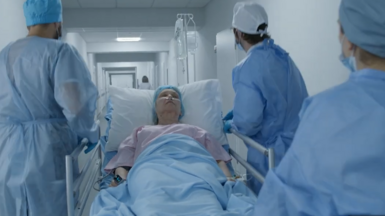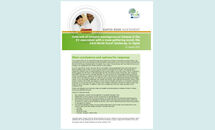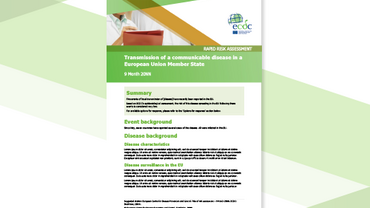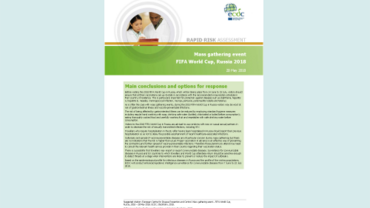Rapid Risk Assessment: Outbreak of invasive meningococcal disease in the EU associated with a mass gathering event in Japan, 21 August 2015
This rapid risk assessment considers the risk to the EU of an outbreak of invasive meningococcal disease in the UK and Sweden associated with the 23rd World Scout Jamboree in Japan. The two countries have reported eight cases (five confirmed and three suspected cases) of IMD to date in scouts and their contacts who have returned from the Jamboree, which took place in Japan from 28 July to August.
Executive Summary
Two EU countries, the UK (Scotland) and Sweden, have reported eight cases (five confirmed and three suspected cases) of invasive meningococcal disease (IMD) in scouts recently returned from the 23rd World Scout Jamboree and their contacts. The Jamboree, which was held from 28 July to 8 August in Yamaguchi City in Japan, was attended by over 33 000 scouts from 162 countries.
To date, only Sweden (4) and the UK (4) have reported cases in the EU/EEA, while 11 countries (Austria, the Czech Republic, Denmark, Estonia, Malta, Norway, Portugal, Romania, Slovakia, Slovenia and Spain) have reported that they have not received any notifications about cases. However, it is possible that additional cases will be reported due to delays in seeking healthcare, diagnosis and reporting to health officials. It is also possible that cases among contacts of infected participants may still occur despite the lapse of time since the Jamboree.
Multi-country outbreaks of IMD have been linked to transmission during international mass-gathering events in the past. A majority of the approximately 33 000 scouts who participated in the Jamboree were aged 14 to 17 years, an age group known to be at increased risk of invasive meningococcal infections, and some of the scouts attending the Jamboree are from countries with high endemicity of meningococcal infections.
The meningococcal serogroup W (MenW) strain has been identified as the causative agent in two of the cases in the UK. Preliminary typing suggests that the strain is indistinguishable from the strain that has been increasingly seen in England since 2009. The index case has not been identified. It is not uncommon for young people to be asymptomatic carriers of meningococci, and because the majority of IMD cases result from recent transmission following close contact with an asymptomatic carrier, it is likely that one or several scouts attending the Jamboree were indeed carriers.
It has not yet been established if the Swedish and Scottish cases interacted and possibly shared a close contact. However, the number and frequency of close contacts between participants at a Jamboree is expected to be high. It is known that scout units from Finland, France, Sweden, Switzerland, and the US stayed in tents close to the UK units’ campsites. In addition, a disco was arranged every third day, where all groups at the Jamboree mixed.
Further microbiological and molecular studies are needed to provide laboratory evidence of direct or indirect transmission between the cases.
The risk of developing IMD is highest immediately after a person has acquired an infection and declines over a 10-day period after infection. The Jamboree ended on 8 August, and the critical 10 day period (the upper incubation period range) for a newly infected person to develop IMD has elapsed for those scouts that may have become infected at the Jamboree.







